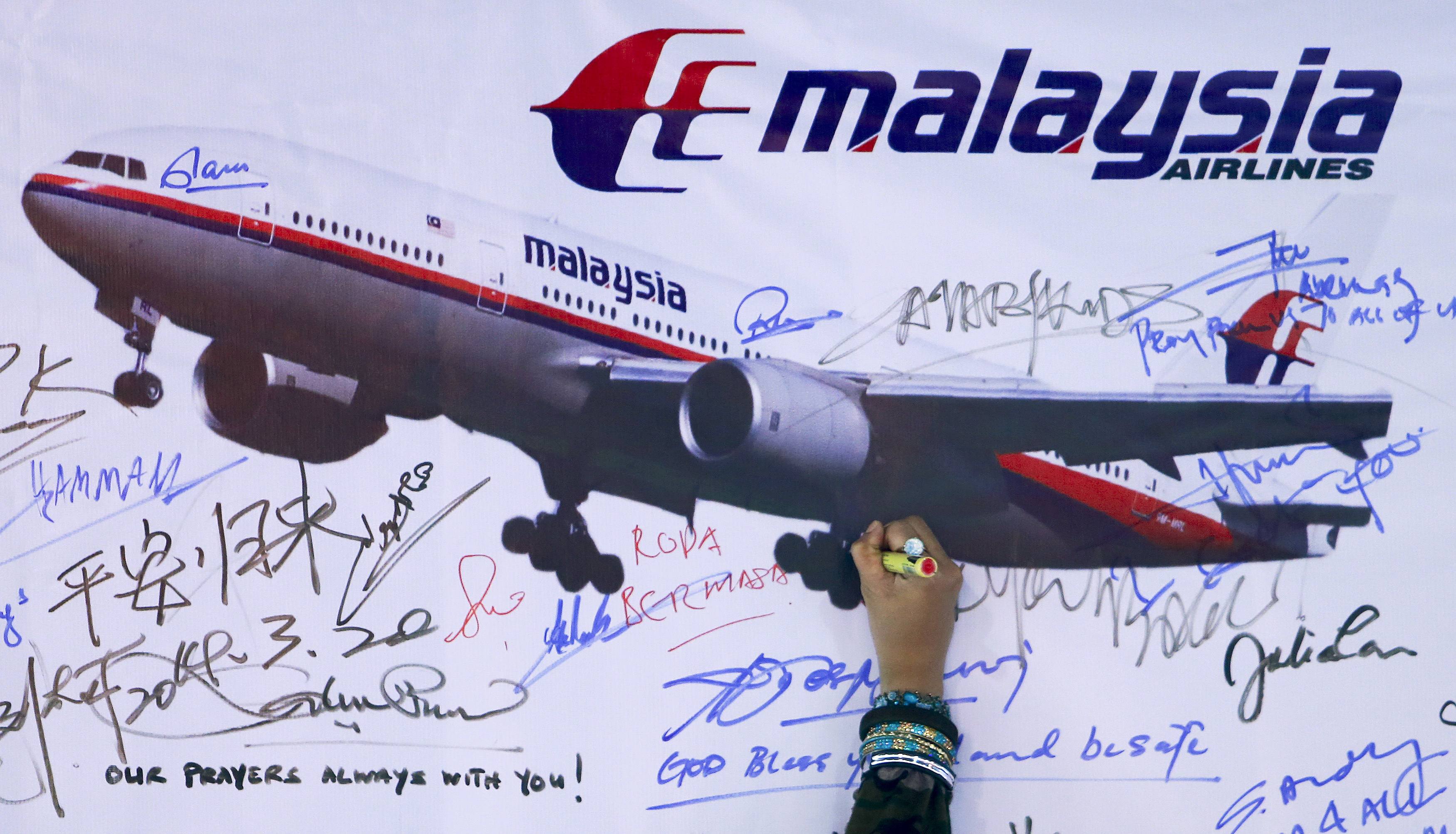
A woman writes a message on a board for passengers onboard missing Malaysia Airlines Flight MH370 and their family members, at Dataran Merdeka in Kuala Lumpur March 22, 2014. Two weeks after the airliner went missing with 239 people on board, officials are bracing for the "long haul" as searches by more than two dozen countries turn up little but frustration and fresh questions. REUTERS/Samsul Said (MALAYSIA - Tags: DISASTER TRANSPORT)
Aiming to avoid the recurrence of MH370-type disappearances, the International Civil Aviation Organsiation (ICAO) Council adopted new provisions this week aimed at preventing the loss of commercial aircraft experiencing distress in remote locations. The UN aviation agency has approved new amendments to Annex 6 to the Chicago Convention (Operation of Aircraft) which will take effect between now and 2021.
They relate primarily to: The requirement for aircraft to carry autonomous distress tracking devices which can autonomously transmit location information at least once every minute in distress circumstances; the requirement for aircraft to be equipped with a means to have flight recorder data recovered and made available in a timely manner; and extending the duration of cockpit voice recordings to 25 hours so that they cover all phases of flight for all types of operations.
“These developments are consistent with the findings and recommendations of the multidisciplinary Ad-Hoc Working Group ICAO formed after Malaysia Airlines MH370 went missing in March 2014,” commented Olumuyiwa Benard Aliu, ICAO Council president.
“They directly support the concept of operations for the Global Aeronautical Distress and Safety System (GADSS) which was proposed by ICAO at that time, and will now greatly contribute to aviation’s ability to ensure that similar disappearances never occur again.”
The provisions relating to one-minute distress tracking are performance-based, meaning that airlines and aircraft manufacturers may consider all available and emerging technologies which can deliver the one-minute location tracking requirement specified. The new flight recorder data recovery provisions are also performance-based, meaning that related technology solutions may or may not entail the need for deployable flight recorders.
“Taken together, these new provisions will ensure that in the case of an accident the location of the site will be known immediately to within six nautical miles, and that investigators will be able to access the aircraft’s flight recorder data promptly and reliably,” added Aliu. “They will also contribute to greatly improved and more cost-effective search and rescue operations.”
 Just last week another piece of metal measuring 130 cm by 55 cm, thought to be part of MH370s horizontal stabilizer, has been sent to Australia for testing with the assistance of Malaysian authorities and Boeing, officials said on Thursday.
Just last week another piece of metal measuring 130 cm by 55 cm, thought to be part of MH370s horizontal stabilizer, has been sent to Australia for testing with the assistance of Malaysian authorities and Boeing, officials said on Thursday.
The object was found on a sandbank in the Mozambique channel, which separates the African continent and Madagascar. “It is too early to speculate on the origin of the debris at this stage,’ Australian Minister for Infrastructure and Transport Darren Chester told parliament. However, the piece was found in “a location consistent with drift modelling commissioned by the Australian Transport Safety Bureau”, he added.
Last July a two-metre-long wing part known as a flaperon washed up on a beach on the island of Reunion, located in the Indian Ocean, across Madagascar from where the latest debris was found. French authorities subsequently confirmed ‘with certainty’ two months later than the wing part found on the remote island was from MH370.
The 1.82 metre-long wing flap washed up over 5,600km from the aircraft’s last-known location, fuelling hopes across the world that one of aviation’s greatest mysteries could finally be solved. The news comes nearly two years to the day since the disappearance of the Malaysia Airline’s flight, which vanished enroute from Kuala Lumpur to Beijing with 239 people on board.
The search for MH370, being conducted in the southern Indian Ocean south west of Australia, is due to end in June this year.









